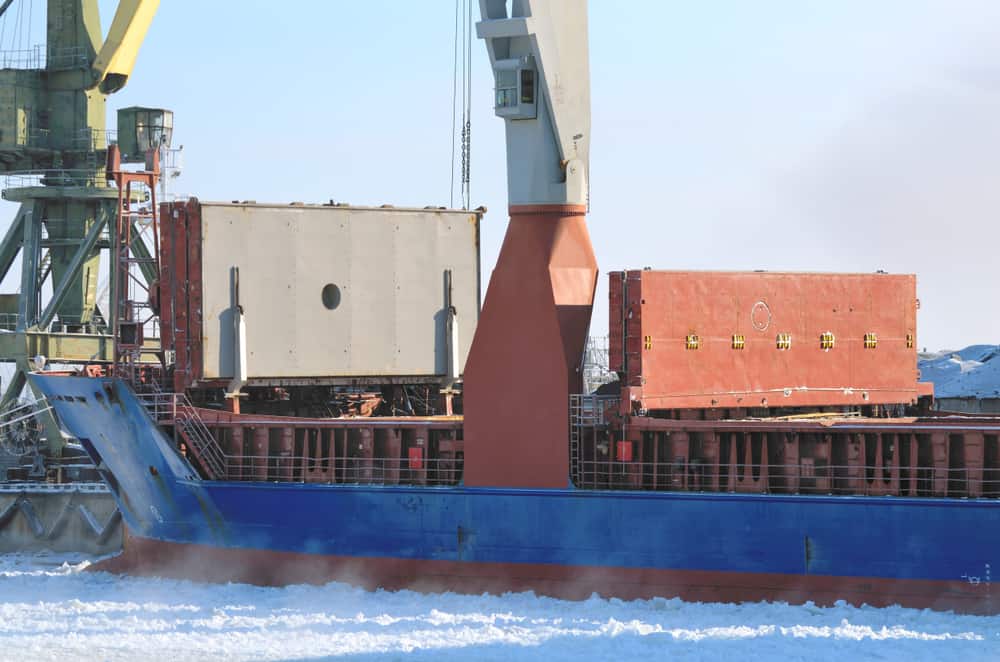Looking at a cargo ship from afar, you can see that containers are stacked on top of another. It’s similar to seeing a stack of cans on the shelf at a local supermarket. You might ask, isn’t this dangerous? At sea, there are many factors that can potentially cause containers to fall overboard. However, unlike the canned goods at your supermarket, many steps are taken so that your container is secured in place. Containers are loaded onto ships similar to how one puts together Lego pieces. This is done to maximize the number of containers loaded on board, and minimize the space that containers have to move around freely.
First, containers are loaded below the deck (in the holds.)
Working their way upward, containers are first loaded into the cargo ship’s holds. This space is designed to hold containers. On the walls of this compartment, there are guides on each side that run vertically and allow containers to slide into place. This prevents containers from moving from all sides. After loading has finished below the deck, the hold is then covered using a hatch. Once the hatch is placed on top, it serves as a platform to place more containers on the ship’s deck.
Next, containers are loaded above on the ship’s deck.
The containers that you see on the ship’s deck are the ones that need extra equipment to secure them. Unlike stacked cans of tuna at a supermarket, these containers are constantly exposed to motion and harsh weather conditions. Fortunately, there are container lashing steps taken to prevent containers from falling into the sea. Workers from both the ship, and port, work together to ensure that lashing equipment is being correctly used.
Types of Basic Lashing Equipment used on the ship’s deck.
- Twist Locks: A twist lock secures one container to another above or below it. On the corners of each container, there are castings in place to allow a twist lock to be used.
- Short/Long Lashing Rods: These are used to tie containers to the ship’s platforms.
- Turnbuckles: These are used to adjust the tension of the lashing rods.
Lashing equipment is inspected daily throughout a ship’s voyage. After the ship’s journey is complete, cargo is de-lashed as the ship approaches port, to help it be discharged faster.




